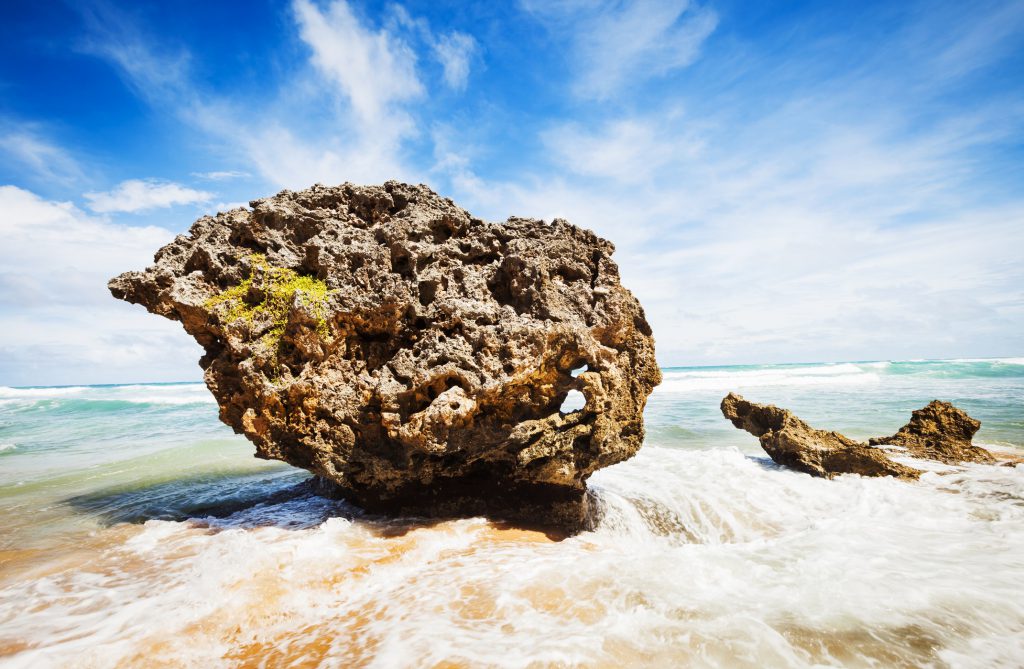Yello’s Bite-sized Guide to the Caribbean: Barbados
by Karen Rollins Jun 7, 2021

Yello knows the Caribbean! We are based in 20 countries across the region, and each one of them is quintessentially Caribbean while also offering visitors a one-of-a-kind cultural experience.
Our British, French and Dutch colonial past can be seen in our food, art, fashion, music, and languages. As a region, we are slowly developing our own unique Caribbean identity based on our distinct geography, values, and experiences.
It’s time to appreciate our shared Caribbean culture and find out more about the islands in our region – let’s learn more about Barbados.
Independence Day: 30 November 1966
Capital: Bridgetown
Background: Barbados is the furthest east of all the Caribbean islands. It is less than one million years old and is predominantly made up of coral formations.
The island’s first inhabitants were Amerindians (known as Arawaks) who arrived from Venezuela. The Arawaks were soon conquered by the Caribs, who were a taller and stronger Amerindian tribe.
Portuguese explorer Pedro a Campos was the first European to see the island. He named it Los Barbados, which means bearded-ones – presumably after the many bearded fig trees but possibly because of the bearded indigenous people.
The first British ship arrived on 14 May 1625, and Captain John Powell claimed the island on behalf of King James I. On 17 February 1627, Captain Henry Powell landed with 80 settlers and 10 enslaved Africans to populate the country.
Barbados was a British colony for over 340 years before gaining independence on 30 November 1966.
Getting around: Barbados is one of the easiest Caribbean islands to navigate because of its reasonably good road network.
Visitors can hire a car or a motorcycle or hop on a blue public transport bus to get from one end of the country to the other. Other transport options include taxis, yellow minibuses, ZR vans, or a bicycle.
Barbados’ public transport buses have a standard one-way fare of $3.50 (BBD). All blue buses have designated routes, and their destination is usually clearly displayed on the front, or you can ask the driver.
The island’s bus stops are marked ‘To City’ (towards Bridgetown) and ‘Out of City,’ to help point you in the right direction.
Must-see place of interest: Harrison’s Cave, located in the parish of St Thomas, is a natural wonder.
The vast attraction features streams and waterfalls and glistening stalagmites, which rise from the floor, and stalactites, which descend from the ceilings.
Visitors are driven around the extensive system of caves in electrically-operated trams, and there are various stop-off points where you can take amazing pictures.
Must-do annual event: Barbados’ annual ‘Crop Over’ carnival culminates on the first Monday in August which is known as Kadooment Day.
Kadooment is a cocktail of revelry, colour, dance and music. It usually features hundreds of costumed locals and tourists ‘jumping’ behind thumping music trucks, mobile bars, and motorcades starting from Warrens, and finishing on the Mighty Grynner Highway.
The mammoth street party is a fitting end to the six-week-long festival season.
Little known fact: Barbados is the first island in the Caribbean to have an official tartan. The ‘Island of Barbados Tartan’ is blue, black and yellow and was designed by Robert Guibal, owner of James Robertson Kiltmaker in Glasgow, Scotland.
Motto: ‘Pride and Industry’
Barbados is open for visitors, but there are various COVID-19 restrictions in place. Please check the Visit Barbados website for the latest protocols and travel information.
Sources: Barbados.org, Visit Barbados, Harrison’s Cave, and the National Cultural Foundation.







